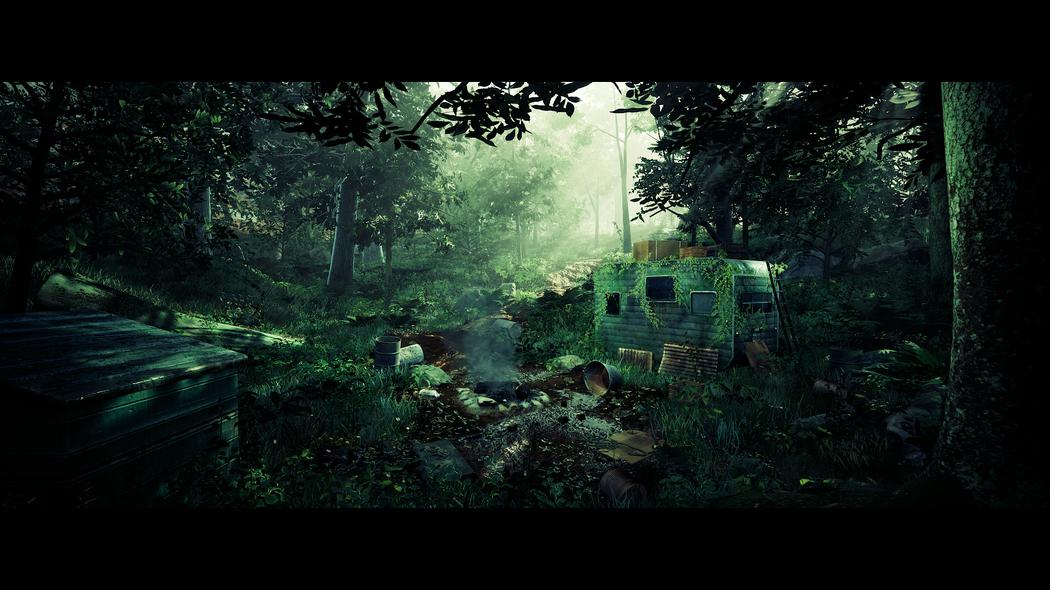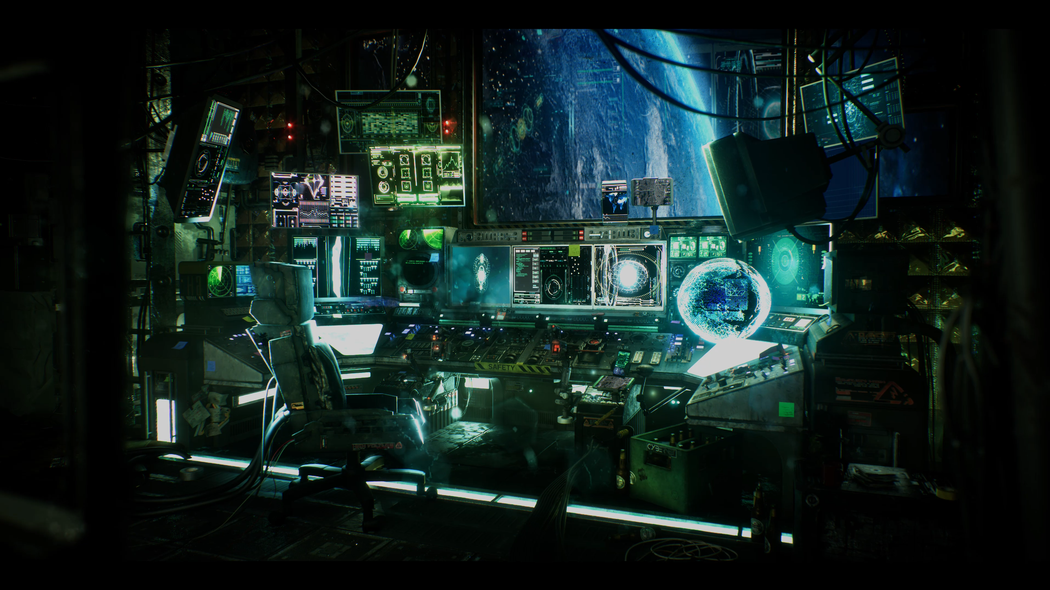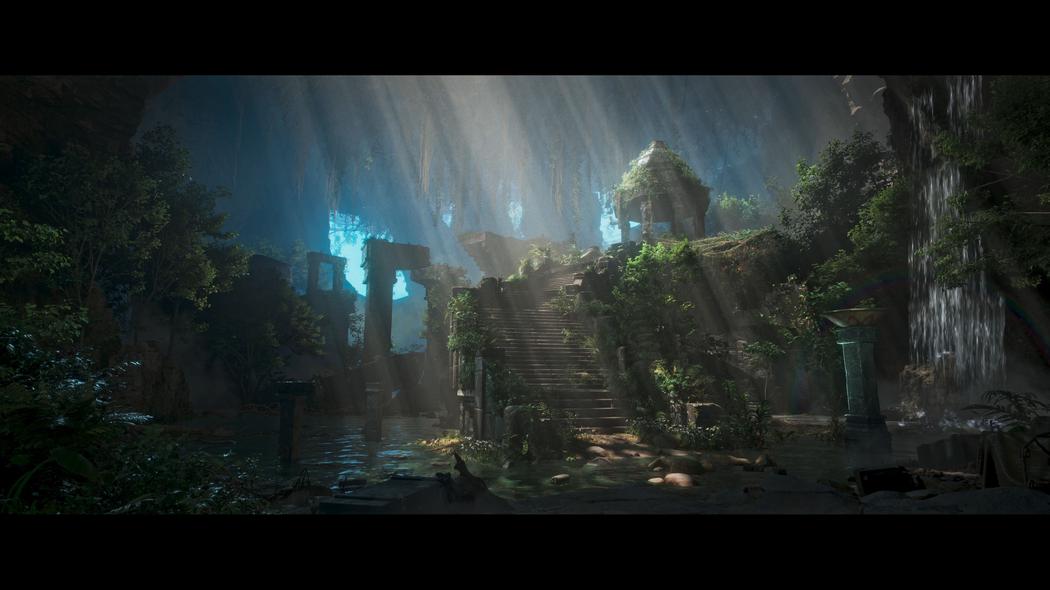Yuko Hwang
Your education: Gnomon School Visual Effect
Describe your art in three words: Imaginative, atmospheric, detailed.
Your discipline: I specialize in 3D art, focusing on creating immersive, detailed worlds that blend realism with imaginative storytelling. My work spans both organic and hard-surface modeling, with an emphasis on mood, texture, and visual narrative.
Website | Instagram
 Yuko Hwang | Abandoned Campsite Daylight | 2022
Yuko Hwang | Abandoned Campsite Daylight | 2022
You started your creative journey with traditional fine art in Taipei. How has that classical training influenced your approach to 3D modeling and environment design?
Starting with traditional fine art in Taipei gave me a strong foundation in observation, composition, and an understanding of form, light, and texture. Spending years drawing and painting taught me patience and the importance of subtle details—skills that directly carry over into my 3D work. When I design environments or model assets, I approach them much like I would a canvas: considering balance, depth, and atmosphere. My classical training also ingrained in me a habit of storytelling through visual cues, which helps me infuse my 3D scenes with mood and narrative rather than just focusing on technical execution. Ultimately, that blend of traditional artistry and digital tools allows me to create worlds that feel both believable and emotionally engaging.
Your work blends imaginative sci-fi worlds with realistic details. How do you balance the fantastical with the believable?
For me, the key to balancing the fantastical with the believable is grounding imagination in reality. Even in the most surreal sci-fi settings, I draw from real-world references—how materials age, how light behaves, how nature shapes its surroundings. These familiar details give viewers something to connect with, making the world feel plausible. Once that foundation is set, I can push the creative side—introducing unusual shapes, colors, or concepts—without losing immersion. It’s a constant dialogue between creative freedom and visual logic, so the environments feel like they could truly exist somewhere, even if only in a distant galaxy.
 Yuko Hwang | Space Capsule | 2023
Yuko Hwang | Space Capsule | 2023
How does storytelling influence your design decisions, especially when working on purely environmental scenes without visible characters?
Storytelling is at the heart of how I design, even when there are no characters present. I think of the environment itself as a silent narrator—every object, texture, and lighting choice can hint at what happened there or who might inhabit it. For example, the wear on a surface, the placement of props, or the way light filters through a space can all suggest a history or emotion. Without visible characters, these subtle cues become even more important because they invite the viewer to imagine the unseen story. My goal is for the scene to feel alive, as if someone just left moments ago or is about to arrive.
Many of your works have a cinematic feel. Do you draw inspiration from films or games when composing your scenes?
Absolutely. I often draw inspiration from both films and games, not only for their visual styles but also for how they use composition, pacing, and atmosphere to tell a story. Films teach me a lot about framing, lighting, and color grading—how a single shot can set a tone or evoke emotion. Games inspire me in a different way; they show how environments can be immersive and interactive, guiding the player’s attention through visual cues. When I compose my own scenes, I try to blend those influences: the cinematic drama of film with the spatial storytelling of games, so each environment feels like a frame from a larger narrative.
When working in Unreal Engine for professional film productions, what are some key differences compared to creating personal portfolio projects?
Working in Unreal Engine for professional film productions is very different from creating personal portfolio projects. In a production setting, everything has to serve the director’s vision and meet strict deadlines, so there’s a strong focus on efficiency, optimization, and collaboration. Assets are often created to fit seamlessly into a larger pipeline, meaning I have to follow specific technical requirements, naming conventions, and file structures. The work is also highly specialized—sometimes I’m responsible for just one part of a scene, and I need to ensure it integrates perfectly with others’ work.
In personal projects, I have full creative freedom to experiment, push details as far as I want, and iterate until I’m satisfied. There’s more room to take risks, explore different moods, and tell stories in my own way. Both approaches are valuable: professional work teaches discipline and teamwork, while personal projects allow me to explore my voice as an artist.
 Yuko Hwang | Secrets of Luminara | 2025
Yuko Hwang | Secrets of Luminara | 2025
What role does lighting play in shaping the atmosphere of your environments? Could you share an example from your recent works?
Lighting is one of the most powerful tools for shaping the mood and storytelling of an environment. It not only reveals form and texture but also guides the viewer’s eye and sets the emotional tone—whether it’s warm and inviting, cold and mysterious, or tense and dramatic. I often think of lighting as the “final brushstroke” that brings all the elements of a scene together.
For example, in my recent Secrets of the Luminara project, I crafted the lighting to feel like a moment suspended between stillness and revelation—soft, ambient tones mingling with precise highlights to shape both intimacy and tension. Cool, atmospheric blues washed over the scene, evoking an air of isolation and ancient mystery, while a warm shaft of sunlight pierced through from above, bathing the temple in a golden glow. This contrast not only guided the viewer’s gaze but hinted at a hidden presence within, as if the structure itself guarded untold stories. Without that delicate interplay of light, the scene would have felt flat, losing the depth and narrative weight that brings it to life.
How do you see the future of 3D art evolving, especially for artists interested in merging realism with science fiction?
I think the future of 3D art, especially at the intersection of realism and science fiction, will be about creating worlds that feel both visionary and grounded in reality. As technology advances—particularly with real-time rendering, AI-assisted tools, and more physically accurate materials—artists will be able to push detail and believability even further, while still having the freedom to explore bold, imaginative ideas.
For those of us who love blending realism with sci-fi, this means we can design environments that feel truly lived-in, with textures, lighting, and atmospheres that make even the most alien settings relatable. I also see a growing demand for immersive storytelling in games, films, and VR experiences, which opens up new opportunities to craft worlds people can actually step into. The challenge will be to keep that human touch and narrative depth, so the technology serves the story rather than the other way around.

Leave a Reply